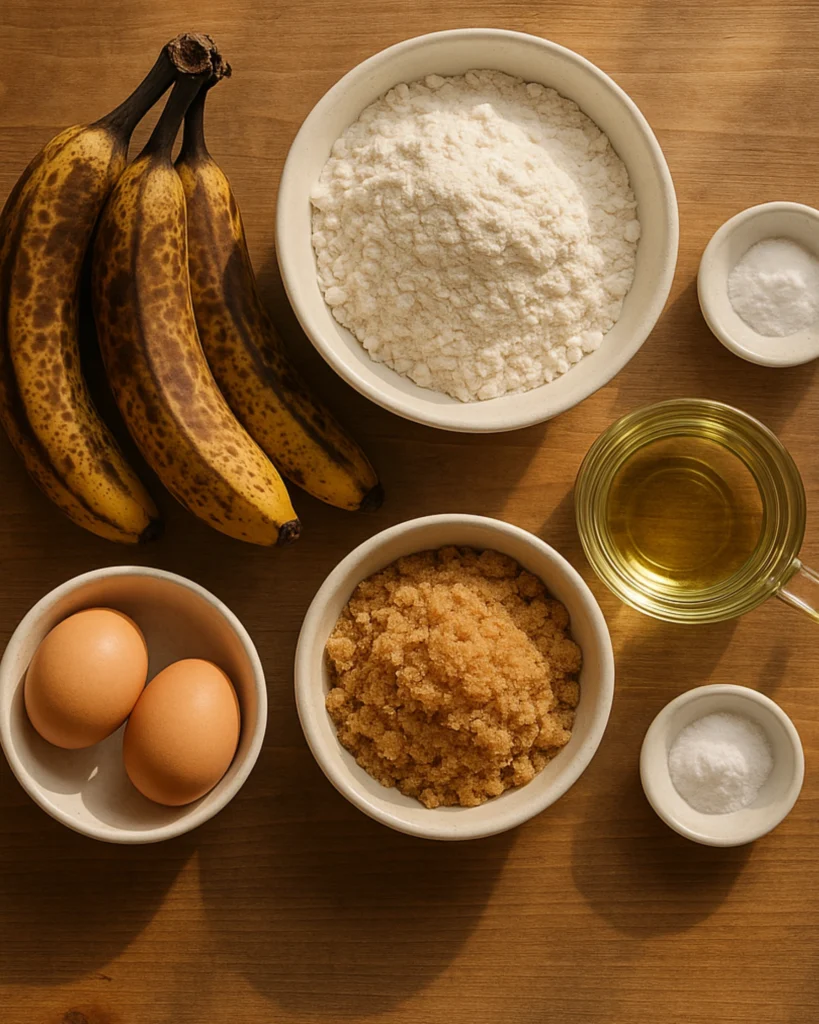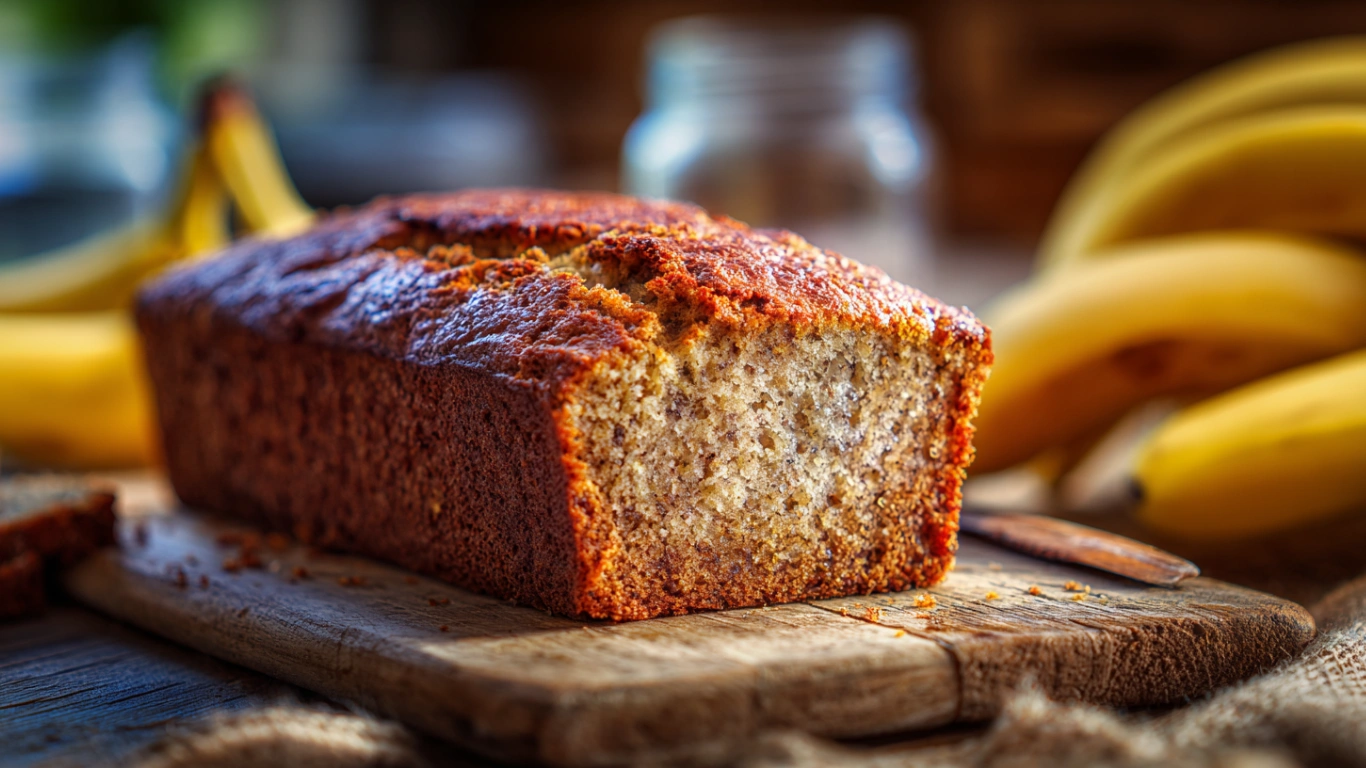If you’ve ever craved a sweet, moist slice of banana bread that melts in your mouth, you’re in the right place. This article dives into the best banana bread recipe and everything you need to know to perfect it whether you’re a first timer or a seasoned baker. You’ll discover the secrets to creating a dense, flavorful loaf, learn which ingredients matter most, and avoid the biggest banana bread blunders. We’ll also answer some of the most common questions bakers ask. And yes, the smell wafting from your oven will be worth every minute.
My Love for the Best Banana Bread
Why banana bread is a staple in my kitchen
I still remember standing on a stool beside my grandmother’s stove, smashing overripe bananas in a chipped ceramic bowl. She had a way of turning the simplest ingredients into something magical. Her banana bread was always moist, never too sweet, and rich with a golden-brown crust. That’s the version I grew up with—the one I set out to recreate when I started baking on my own.
After testing dozens of recipes over the years, I finally cracked the formula. The loaf I bake now is dense yet fluffy, with the deep banana flavor I loved as a child. I’ve made this for brunches, holidays, and rainy days, it never disappoints.
This bread feels right at home next to other cozy favorites like my Strawberry Shortcake Cake Mix Recipe, comfort food that doesn’t take a lot of fuss.
What makes it the best?
To earn the title of best banana bread, your loaf has to be soft, full of banana flavor, and stay moist for days. The secret? Super-ripe bananas, just the right amount of fat, and balanced moisture. That gooey center and golden crust don’t happen by accident.
But the flavor isn’t the only factor—texture plays a huge role too. We’ll get into that in the next section.
Moist and Dense, How to Nail the Texture
Using the right fat: oil vs. butter
When it comes to achieving the best banana bread, texture is everything. The perfect loaf should be dense, yet tender—not crumbly or dry. One of the biggest factors in getting this right is your fat choice: butter or oil.
Butter adds incredible flavor and a slightly firmer structure, which is great if you prefer a more cake, like banana bread. On the other hand, oil creates a moister, softer crumb and helps the loaf stay fresh longer. Want the best of both worlds? Use a 50/50 mix half butter for richness, half oil for softness. This simple tweak makes a noticeable difference in every bite.
Another key element? Your bananas. They should be dark brown and almost collapsing. The spottier, the better. These ultra-ripe bananas add natural sweetness and ensure your loaf comes out soft and flavorful.
Just like my Peanut Butter Coffee Smoothie, where fat and fruit blend for a creamy consistency, banana bread depends on that balance too. Don’t rush your ingredients—let them work together.
Moisture magic: yogurt, eggs, and sugar
Aside from fat, the other moisture-boosting ingredients play a big role. Sour cream or Greek yogurt can take your loaf from good to bakery-level. They provide a subtle tang, tenderize the crumb, and increase richness without overpowering the banana flavor.
Eggs (always at room temperature) help bind the bread and keep it soft. And brown sugar is a must—it not only adds sweetness but also draws in moisture, making your loaf tender for days.
For a hearty, savory meal to go with your loaf, pair it with the protein-packed Greek Chicken Bowls a sweet savory match that might surprise you.
With the right fat, moisture enhancers, and mixing technique, your banana bread will turn out dense, rich, and absolutely unforgettable.


Mistakes That Ruin the Best Banana Bread
The #1 mistake: overmixing the batter
It’s tempting to stir until the batter looks perfectly smooth, but that’s actually the worst thing you can do. Overmixing activates the gluten in the flour, which leads to a dense, rubbery loaf. You want your banana bread to be rich and tender, not chewy like a bagel.
Here’s a better way: Mix your wet and dry ingredients separately. Then, when you combine them, use a spatula to gently fold the mixture just until the flour streaks disappear. A few lumps are totally fine, it’ll all bake out evenly.
If you’ve ever tried whipping together something fast like the Strawberry Shortcake Cake Mix Recipe, you’ll know how crucial gentle mixing is in baked goods. Banana bread follows the same principle.
Another common mistake? Using underripe bananas. While they might seem “fine,” they lack the natural sugars and softness needed for flavor and texture. Your bread will end up bland and dry—definitely not what we’re aiming for when we say best banana bread.
Other banana bread pitfalls to avoid
Let’s break it down:
- Wrong pan size: Using a pan that’s too small causes the batter to overflow; too large, and it bakes unevenly.
- Skipping the salt: Even in sweet recipes, salt is essential—it balances flavor.
- Too much flour: Always spoon and level flour into the measuring cup. Scooping packs in extra flour and dries out your loaf.
- Baking at the wrong temperature: Bake at 325°F–350°F. Higher temps brown the crust too fast and leave the inside undercooked.
For more balanced recipes, try one like the Cottage Cheese Crust Pizza, where attention to ingredient ratios makes all the difference.
And if you’re looking for another foolproof baked treat, check out these Brownie Cheesecake Cups. They use similar tricks to keep things rich, creamy, and satisfying—no dry bites here!
Mistakes That Ruin the Best Banana Bread
The #1 mistake: overmixing the batter
The single most common mistake people make when baking banana bread is overmixing the batter. It’s easy to get carried away trying to smooth everything out, but too much stirring activates the gluten in the flour. The result? A tough, rubbery texture instead of the soft, tender loaf you’re after.
The best approach is to mix your wet and dry ingredients separately. Then, combine them using a spatula or wooden spoon, and stir just until there are no more dry streaks. A few lumps are completely fine, those will bake out perfectly. This gentle folding method helps the bread stay moist, dense, and delicate.
Other mistakes to avoid
Another big mistake is using bananas that aren’t ripe enough. Green or yellow bananas simply don’t have the sweetness or moisture needed for the best banana bread. Wait until they’re soft, deeply speckled, or even blackened. The riper, the better.
Measuring flour incorrectly is another pitfall. If you scoop straight from the bag, you’re likely packing too much flour, which leads to dryness. Instead, spoon the flour into your measuring cup and level it with a knife.
Baking at the wrong temperature is also a recipe for disaster. Too hot, and the outside browns too quickly while the inside stays undercooked. Stick with 325°F–350°F for even baking.
And finally, don’t skip the salt. Even in sweet recipes, salt brings balance and enhances every flavor in the loaf. Leaving it out can make banana bread taste flat and one, dimensional.
These small details can make or break your bake. When you understand and avoid these mistakes, your banana bread will consistently come out just the way you want moist, flavorful, and satisfying.
Elevating Your Banana Bread, Simple Additions, Big Impact
Flavor boosters that go beyond basics
Once you’ve mastered the classic banana bread, it’s time to have some fun. Small additions can take your loaf to the next level without changing its core appeal.
Start with the classics: chopped walnuts, pecans, or even almonds give it a buttery crunch and pair beautifully with banana flavor. Chocolate lovers can fold in dark chocolate chips for little pockets of richness in every bite. For a twist, try shredded coconut, dried fruit, or even a swirl of nut butter—each adds a unique touch.
Warm spices also go a long way. Cinnamon is a go-to, but cardamom and nutmeg can offer a more refined, layered flavor. These little tweaks turn banana bread into something personal.

Presentation and storing tips
Your loaf deserves to look as good as it tastes. For a bakery style finish, sprinkle the top with raw sugar or oats before baking. It’ll create a light, sweet crust that contrasts perfectly with the soft interior.
Once cooled, banana bread stores well in an airtight container at room temperature for up to four days. For longer storage, refrigerate or freeze individual slices. Just make sure it’s wrapped tightly to preserve moisture.
If you’re curious about how bananas soften and ripen so fast, this Science Learning Hub article explains how ethylene gas activates enzymes that transform their texture and sweetness—perfect for banana bread baking.
Banana bread isn’t just a recipe, it’s a blank canvas. With a few creative tweaks, it becomes something that reflects your taste, your story, and your kitchen.

Best Banana Bread
Ingredients
Equipment
Method
- Preheat oven to 350°F (175°C). Grease a 9×5-inch loaf pan.
- In a large bowl, mash bananas until smooth.
- Whisk in eggs, oil (and/or butter), sugar, and vanilla.
- In a separate bowl, mix flour, baking soda, and salt.
- Gently fold dry ingredients into wet mixture. Don’t overmix.
- Add optional yogurt and mix-ins like nuts or chocolate.
- Pour into loaf pan and smooth the top.
- Bake for 55–65 minutes, or until a toothpick comes out clean.
- Cool in pan for 10 minutes, then transfer to a rack.
Nutrition
Notes
From your stove to our hearts
share your delicious take!FAQs About the Best Banana Bread
What is the secret to the best banana bread?
Use overripe bananas, a mix of oil and butter, and avoid overmixing.
What is the number one mistake made when making banana bread?
Overmixing the batter—it makes the bread dense and toug
How to make banana bread moist and dense?
Use very ripe bananas, brown sugar, and add yogurt or sour cream
Is it better to use oil or butter in banana bread?
Oil keeps it moist longer; butter adds flavor. A mix of both works best
Conclusion: This Truly Is the Best Banana Bread
This best banana bread recipe is the one you’ll turn to again and again. It’s simple, dependable, and consistently delivers the rich banana flavor and moist, dense texture that makes each bite unforgettable. Whether you’re baking for a family brunch, using up overripe bananas, or just craving a classic comfort treat, this loaf checks every box.
The key is in the details—using very ripe bananas, mixing oil and butter for texture, and stirring gently to avoid overworking the batter. Each of these steps helps create a loaf that’s not only delicious on the first day but stays soft and flavorful for days afterward.
No need for fancy ingredients or special equipment. Just a bowl, a whisk, and a few pantry staples are all it takes to create something truly special. This isn’t just banana bread, it’s a go-to recipe you’ll keep in your favorites folder and pass down for years.
Once you bake it, slice into it, and take that first warm bite, you’ll know why it earns the title of best banana bread.
